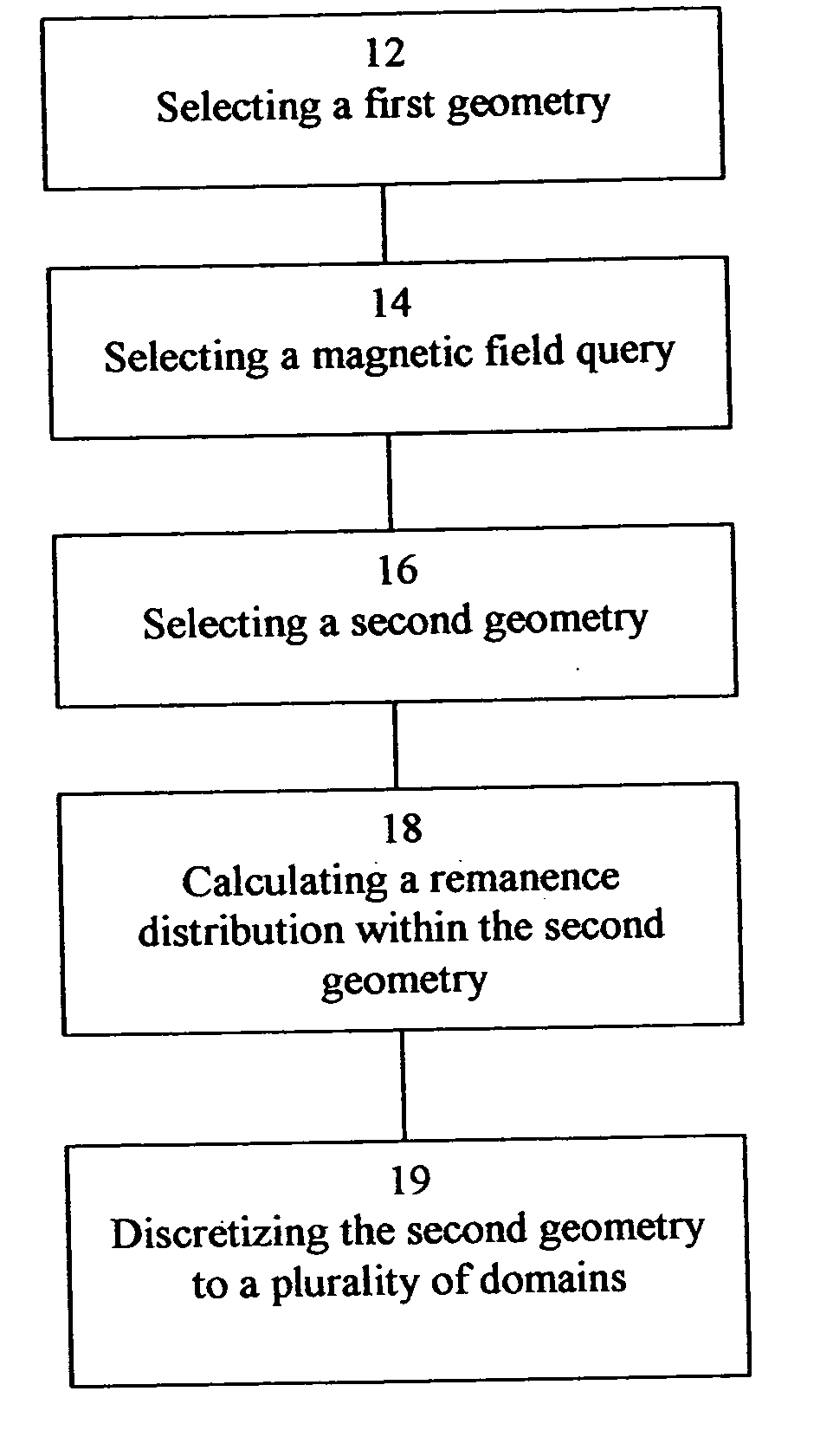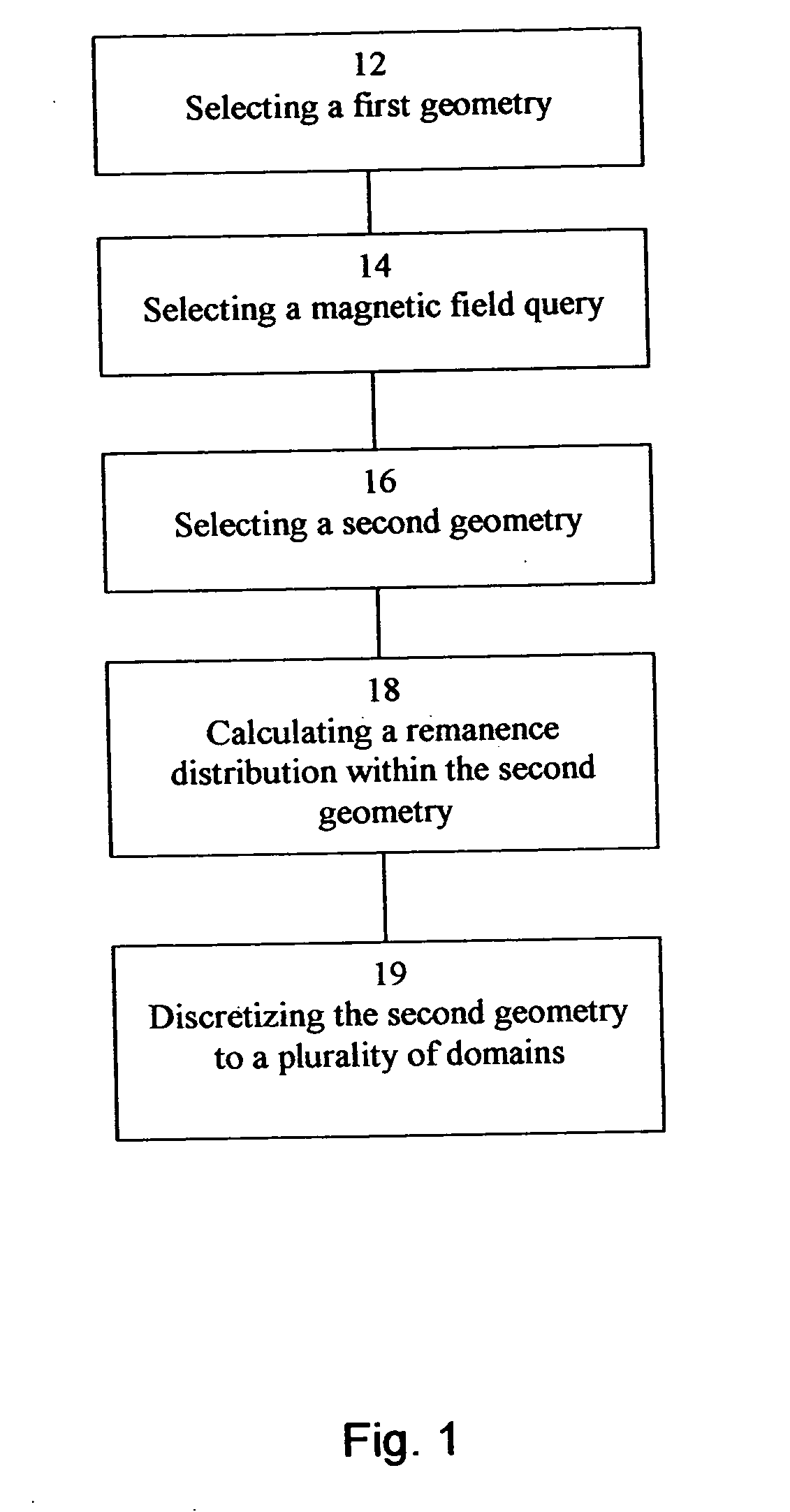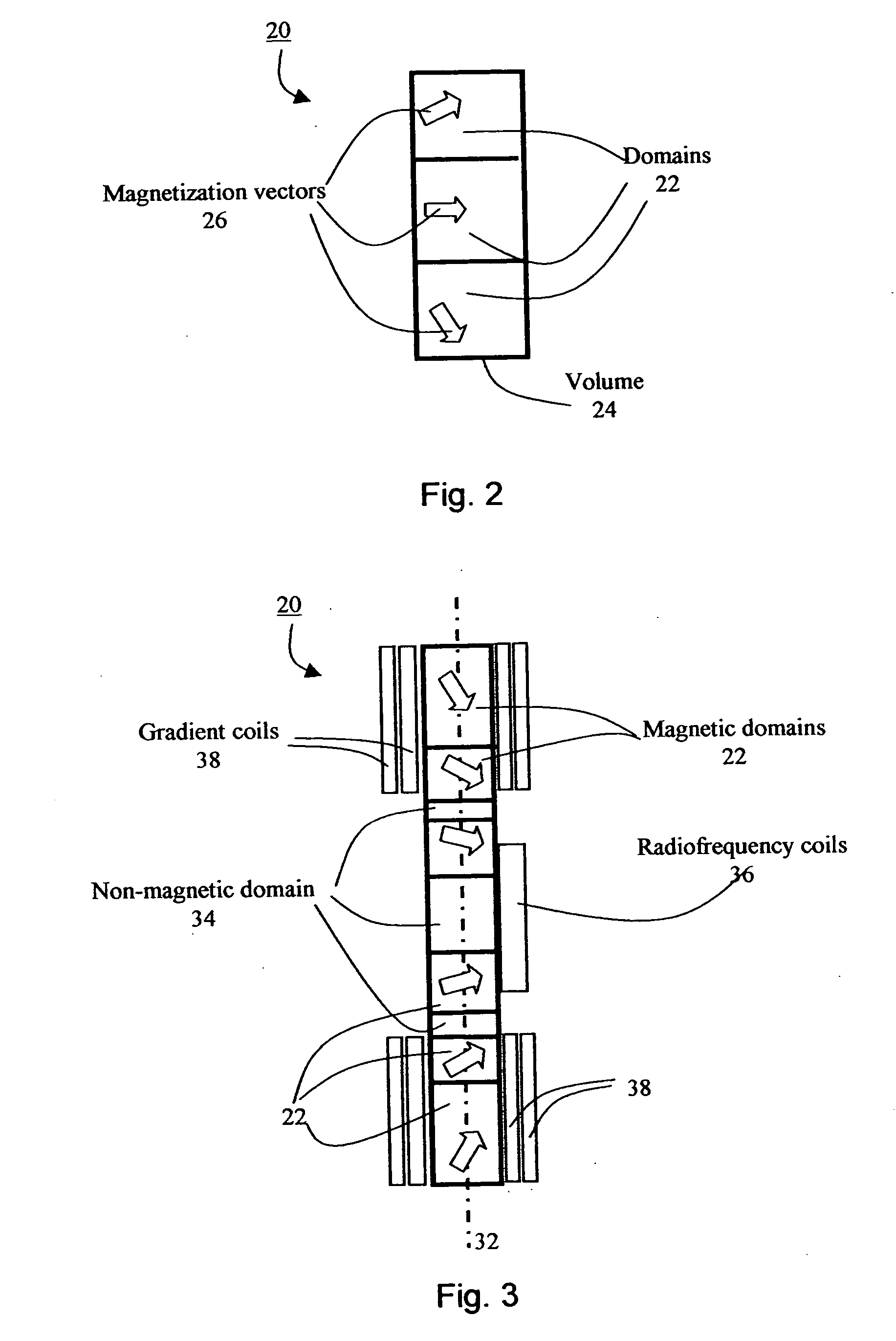Method and apparatus for magnetic resonance analysis
a magnetic resonance analysis and method technology, applied in the field of magnetic resonance analysis, can solve the problems of dictating the complexity of procedures like balancing and tuning, gradient coils naturally add complexity to the mri system, and the size of the superconductor magnet is typically large, so as to minimize the load and minimize the effect of magnetic acoustic ringing
- Summary
- Abstract
- Description
- Claims
- Application Information
AI Technical Summary
Benefits of technology
Problems solved by technology
Method used
Image
Examples
example 1
A Variation of the Functional Under a Set of Constraints
[0187] In the following example, the desired characteristic of the magnetic field is obtained by minimizing the functional U0 of Equation 3 using a set of N constraints, which are categorized into two types.
[0188] A first type of constraint includes N1 equality constraints in which there are NJ components of the query magnetic field, Bim, which are predetermined: Bim(xm)=∫D ⅆV′ Gi,k(x′,xm) Jk(x′),(EQ. 5)
where i=1, . . . , N1, D is the second geometry and G is the green function defined in Equation 1 above.
[0189] A second type of constraint includes N-N1 inequality constraints bounding the derivative of one B component. This type is further subdivided into N-N2 constraints bounding the derivative of one B component from below, denoted herein by gmd, and N2-N1 constraints bounding the derivative of one B component from above, denoted herein by gmu gi,kmu(xm)≥x^i ∂∂xi ∫D ⅆV′ Gk,l(x′,xm) Jl(x′)≥gi,kmd(xm)....
example 2
Cylindrical Magnets
[0200] Two cylindrical magnets were designed according to the method of the present invention. The functional and constraints were as in Example 1. A first cylindrical magnet was designed so as to generate a radial magnetic field and a second cylindrical magnet was designed so as to generate an axial magnetic field. The dimensions of both cylinders were 1.5 cm in radius and 5 cm in height, the total magnetization was 1.4 T and the magnets were designed to include 3 domains.
[0201]FIGS. 11a-b show, respectively for the first and second cylindrical magnets, the magnetizations of each domain and the magnetic field, B, as a function of the distance, r, from the center of each cylinder. A substantially rapid drop of the magnetic field is seen, from about 4500 Gausses near the surface of the magnets to less than 1000 Gauss at r=6 cm.
example 3
A Surface Magnet
[0202] A surface magnet was designed according to the method of the present invention. The functional and constraints were as in Example 1. The surface magnet was designed as a disk so as to generate an axial magnetic field. The dimensions of the disk were 6 cm in radius and 5 cm in height, the total magnetization was 1.4 T and the magnet was designed to include 3 concentric domains.
[0203]FIG. 12 shows the magnetizations of each domain and the magnetic field, B, as a function of the distance, z, from the surface of the disk. A substantially rapid drop of the magnetic field is seen, from about 10000 Gausses near the surface of the magnet to less than 1000 Gauss at z=10 cm.
PUM
 Login to View More
Login to View More Abstract
Description
Claims
Application Information
 Login to View More
Login to View More - R&D
- Intellectual Property
- Life Sciences
- Materials
- Tech Scout
- Unparalleled Data Quality
- Higher Quality Content
- 60% Fewer Hallucinations
Browse by: Latest US Patents, China's latest patents, Technical Efficacy Thesaurus, Application Domain, Technology Topic, Popular Technical Reports.
© 2025 PatSnap. All rights reserved.Legal|Privacy policy|Modern Slavery Act Transparency Statement|Sitemap|About US| Contact US: help@patsnap.com



